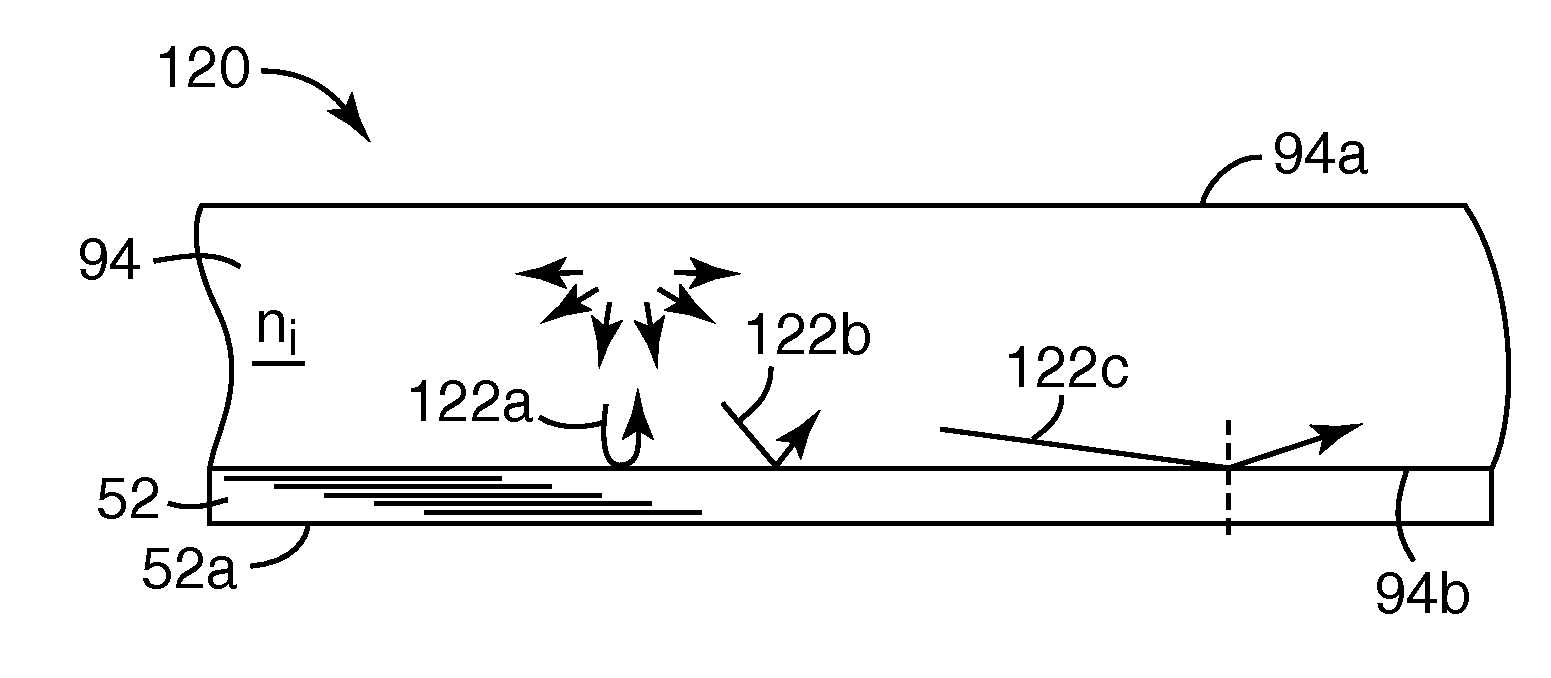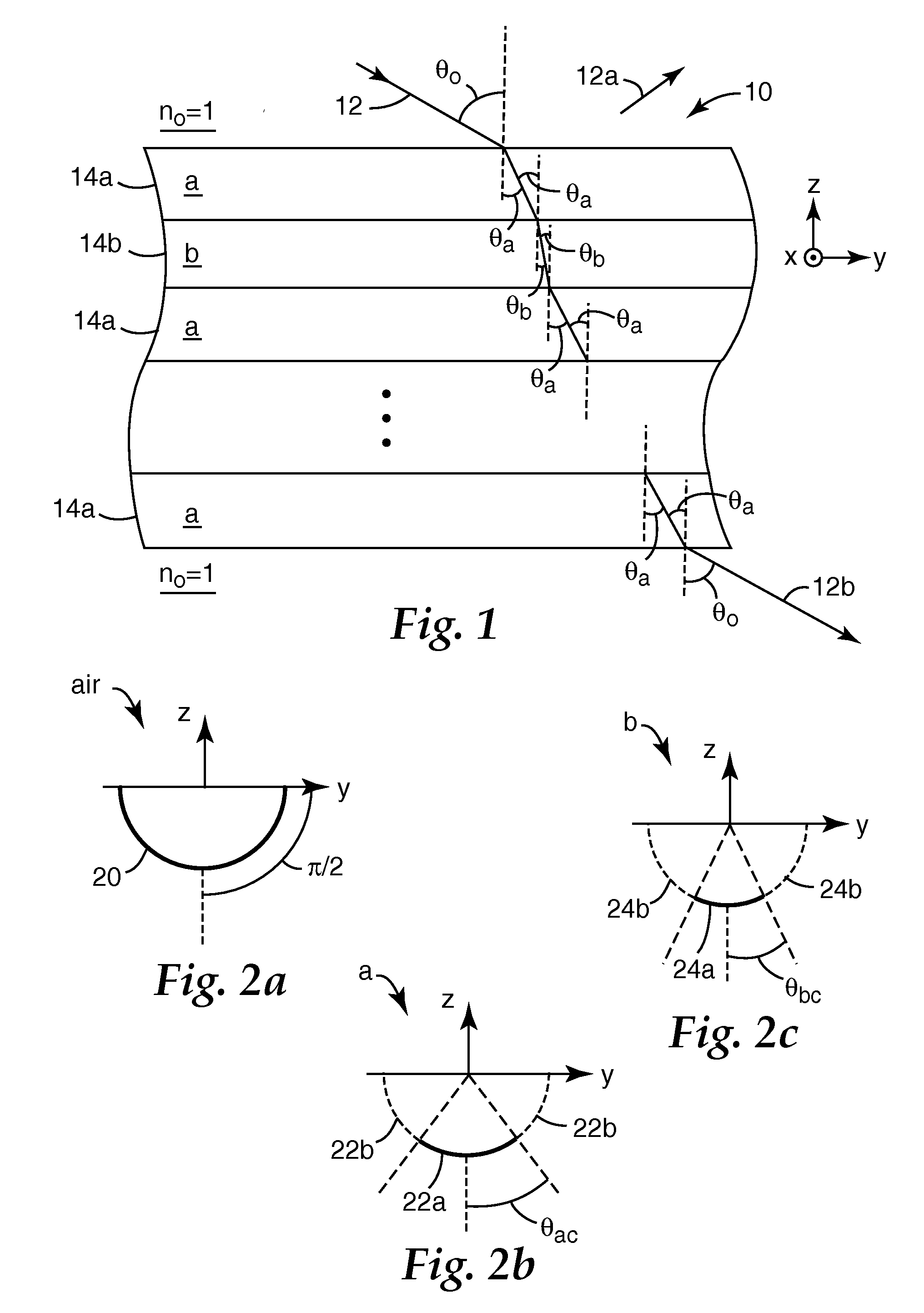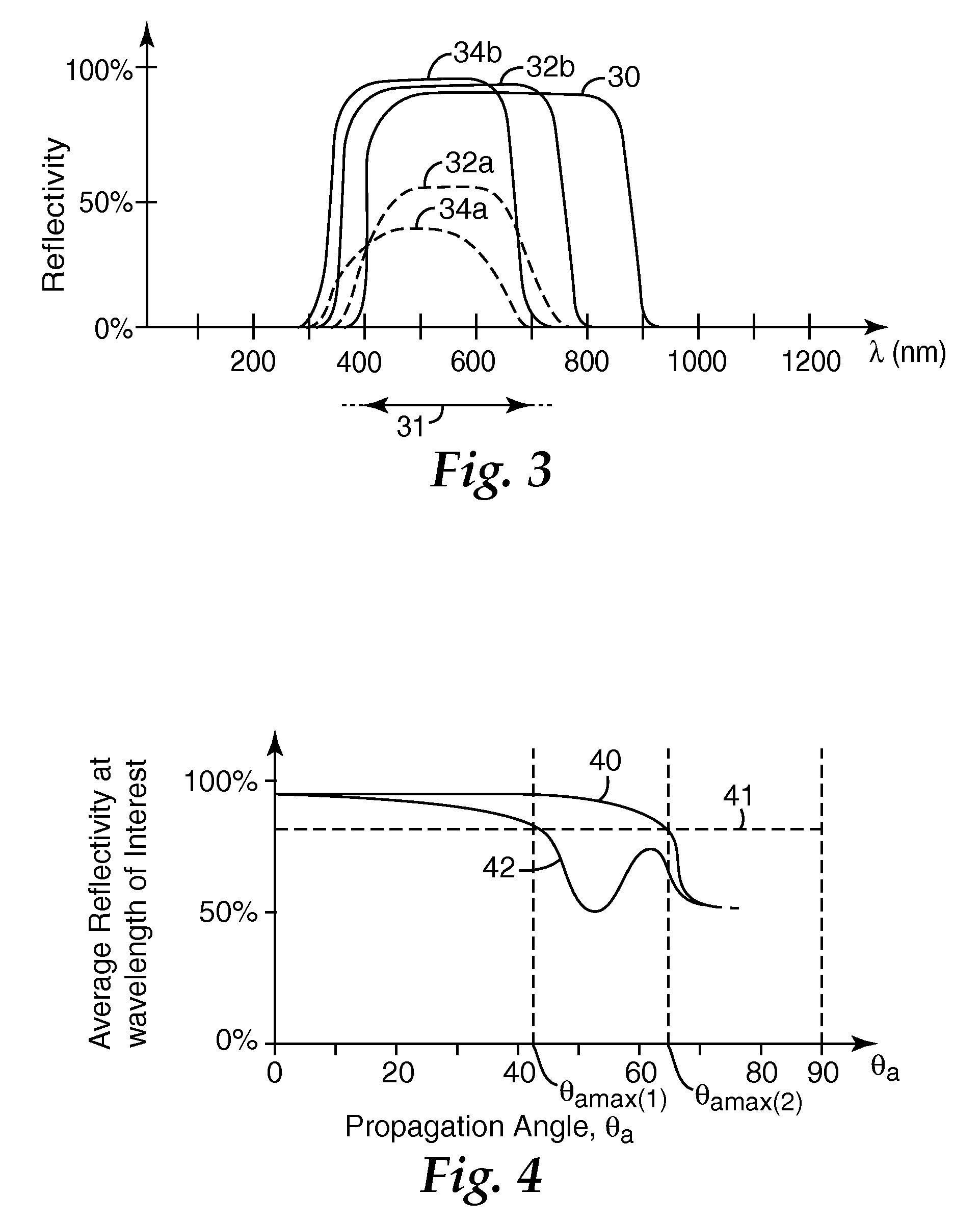Wide angle mirror system
a mirror system and wide angle technology, applied in the field of mirror systems, can solve the problems of reducing system reflectivity, absorbing light, and insufficient reflection of light at wavelengths of interest, and achieve the effect of high reflectivity of the mirror system
- Summary
- Abstract
- Description
- Claims
- Application Information
AI Technical Summary
Benefits of technology
Problems solved by technology
Method used
Image
Examples
example 1
[0070]An extended band mirror film stack was made by using an optical adhesive to laminate together two multilayer mirrors made from oriented PEN and PMMA. The first mirror was made with 530 layers of PEN / PMMA formed using a multiplier and two packets of 265 layers each according to the methods described in U.S. Pat. No. 6,783,349 (Neavin et al.) to provide a visible and near-infrared mirror with a reflectance band, for normally incident unpolarized light, extending from about 400 nm to about 1000 nm. The second mirror was similarly made but contained only one packet of 265 layers of PEN / PMMA to provide an infrared mirror with a reflectance band from about 1000 nm to 1700 nm. Each mirror was biaxially stretched under suitable conditions to render the PEN material birefringent, with substantially equal in-plane refractive indices (measured at 633 nm) of about 1.75 and a z-axis refractive index of about 1.49, while the PMMA material remained substantially isotropic with a refractive i...
PUM
| Property | Measurement | Unit |
|---|---|---|
| wavelength range | aaaaa | aaaaa |
| angle | aaaaa | aaaaa |
| propagation angle | aaaaa | aaaaa |
Abstract
Description
Claims
Application Information
 Login to View More
Login to View More - R&D
- Intellectual Property
- Life Sciences
- Materials
- Tech Scout
- Unparalleled Data Quality
- Higher Quality Content
- 60% Fewer Hallucinations
Browse by: Latest US Patents, China's latest patents, Technical Efficacy Thesaurus, Application Domain, Technology Topic, Popular Technical Reports.
© 2025 PatSnap. All rights reserved.Legal|Privacy policy|Modern Slavery Act Transparency Statement|Sitemap|About US| Contact US: help@patsnap.com



